Yesterday’s live coverage of the Ukraine conflict can be found here. An archive of our liveblogs can be found here. For an overview and analysis of this developing story see our latest podcast.
Please help The Interpreter to continue providing this valuable information service by making a donation towards our costs.
View Ukraine: April, 2014 in a larger map
For links to individual updates click on the timestamps.
For the latest summary of evidence surrounding the shooting down of flight MH17 see our separate article: Evidence Review: Who Shot Down MH17?
Several people attacked Crimean Tatar leaders today as they gave a press conference on police prevention of their Human Rights Day demonstration in Simferopol, OVDinfo.org and RFE/RL reported.
Assailants headed by Eyvaz Enanov splashed zelyonka on the speakers, which is an indelible green disinfectant often used in attacks on activists in Russia and Ukraine to vilify them. Enanov is said to be a candidate for mayor in the city of Sudak, and also a supporter of a faction of Crimean Tatars opposed to the Mejlis or national assembly.
Esekender Bariyev, Sinaver Kadyrov and Abmedzhit Suleymanov, coordinators of the Committee to Defend the Rights of the Crimean Tatar People were struck while speaking at a news briefing.
The Crimean Human Rights Field Mission reported the attack on their Facebook page. Bariyev identified the attackers as people close to Ruslan Balbek, vice premier of the government in Crimea.
Krym Realii (krmr.org) a news service of the US-funded RFE/RL, published pictures of the attack.


Earlier as we reported, police closed off access to a demonstration site, claiming that organizers had violated procedures for obtaining permission for rallies. The organizers are appealing the action.
Crimean Tatars have held rallies on December 10 in Simferopol in past years, but this year they found the whole area chained off by riot police and Interior Ministry troops.
— Catherine A. Fitzpatrick
Novosti Donbassa reports that Roman Manekin, a Russian political theorist who the Ukrainian news site describe as “one of the Muscovite ideologues of the ‘”Russian world’,” has written on his Facebook page that Yuri Lekstutis, who had been serving as the “minister of culture” in the self-proclaimed “Donetsk People’s Republic,” has been arrested by his fellow separatists.
Manekin wrote (translated by The Interpreter):
Yesterday, Yuri Olegovich Lekstutis, the acting culture minister of the DNR up until the previous day, was placed in pre-trial detention [SIZO] in Donetsk. (The head of the SIZO: Igor Ivanovich Trubitsin).
His charge has not yet been filed.
This is already the third minister in the DNR government to have been arrested since the inauguration of A. Zakharchenko as head of the Republic.
Novosti Donbassa noted that the “minister for fuel and energy,” Alexei Granovsky, and the “deputy prime minister,” Aleksandr Kalyussky, had already been arrested for “abuse of office.”
The site reported that Aleksander Paretsky, a soloist-vocalist at the Donetsk Philharmonic, had been announced as Lekstutis’ acting replacement.
— Pierre Vaux
Any reference to UAVs (unmanned aerial vehicles, or drones) is an implicit accusation against the Russian military which Ukraine says are supplying these drones. The increase in drone activity near Mariupol is not a surprise, since the city is close to the front with the Russian-backed separatists, close to the Russian border, and on the Azov Sea.
The NSDC also reports that registered IDPs, internally-displaced persons, has reached more than half a million:
Yesterday there was intense shelling of Stanitsa Luganskaya, northeast of the city of Lugansk. Read our report about yesterday’s battle here.
— James Miller
In Russian-occupied Crimea, OMON riot police and pro-Russian ‘Self-Defence’ units have cordoned off Lenin Square in the centre of Simferopol, preventing a rally due to be held by Crimean Tatars to mark Human Rights Day.
A metal fence has been established around the square and is being patrolled by police and paramilitaries.


Crimea’s QHA news agency reports that both ‘self-defence’ personnel and soldiers in combat gear are on guard outside the building housing the Council of Ministers of the Republic of Crimea. Police are patrolling the streets of the city centre.
QHA notes that (translated by The Interpreter):
closing the city’s central square ahead of actions initiated by the Crimean Tatars has already become a “tradition” in Simferopol.
RFE/RL’s Ukrainian Service, Radio Svoboda, reports that the security forces told journalists to leave the square and demanded that photographers hand over their memory cards.

Yesterday, Laura Mills and John-Thor Dahlburg reported for the Associated Press on the continuing persecution of Crimean Tatars living under the Russian occupation. They focus on the Tatar community in Sary-Su, where armed troops have cracked down on protests following the abduction and disappearance of two young Tatar men in September.
Their full report can be read here.
— Pierre Vaux
Russia’s Interfax news agency reports that a group of military specialists under the command of Lieutenant General Aleksandr Lentsov has been dispatched to the Donetsk region in Ukraine.
General Valery Gerasimov, the chief of staff of the Russian armed forces, said that the mission had been requested by his Ukrainian counterpart, Viktor Muzhenko.
Interfax reports:
“Representatives of the Russian armed forces led by Lt. Gen. Alexander Lentsov have been sent to the community of Debaltseve in the Donetsk region at Ukrainian armed forces chief of staff Col. Gen. Viktor Muzhenko’s request,” Gerasimov said at a meeting with military attaches of a number of foreign countries on Wednesday.
“This mission has been tasked, together with the OSCE, with helping the conflicting parties, which are the Ukrainian forces and the local militia, to find compromise solutions on de-escalating the tension and withdrawing the troops from the contact line,” he said.
Gerasimov reiterated the Kremlin’s demonstrably falsifiable line that “Russia is not a party to the conflict in Ukraine,” claiming that the conflict directly contradicts Russia’s interests.
Instead, he blamed the West for his military’s well documented invasion of Ukraine (translated by The Interpreter):
“I will speak frankly, it’s not easy. Were it not for the constant outside interference from representatives of a number of European countries, members of NATO and the USA, the problematic issues would be solved far faster.”
— Pierre Vaux
UNIAN reports that Ukraliznytsia (Ukrainian Railways) has announced that a rail bridge between Krasnoarmeysk and Grodovka was damaged by an explosion on December 6. The bridge lies around 40 km west and to the north of Donetsk.
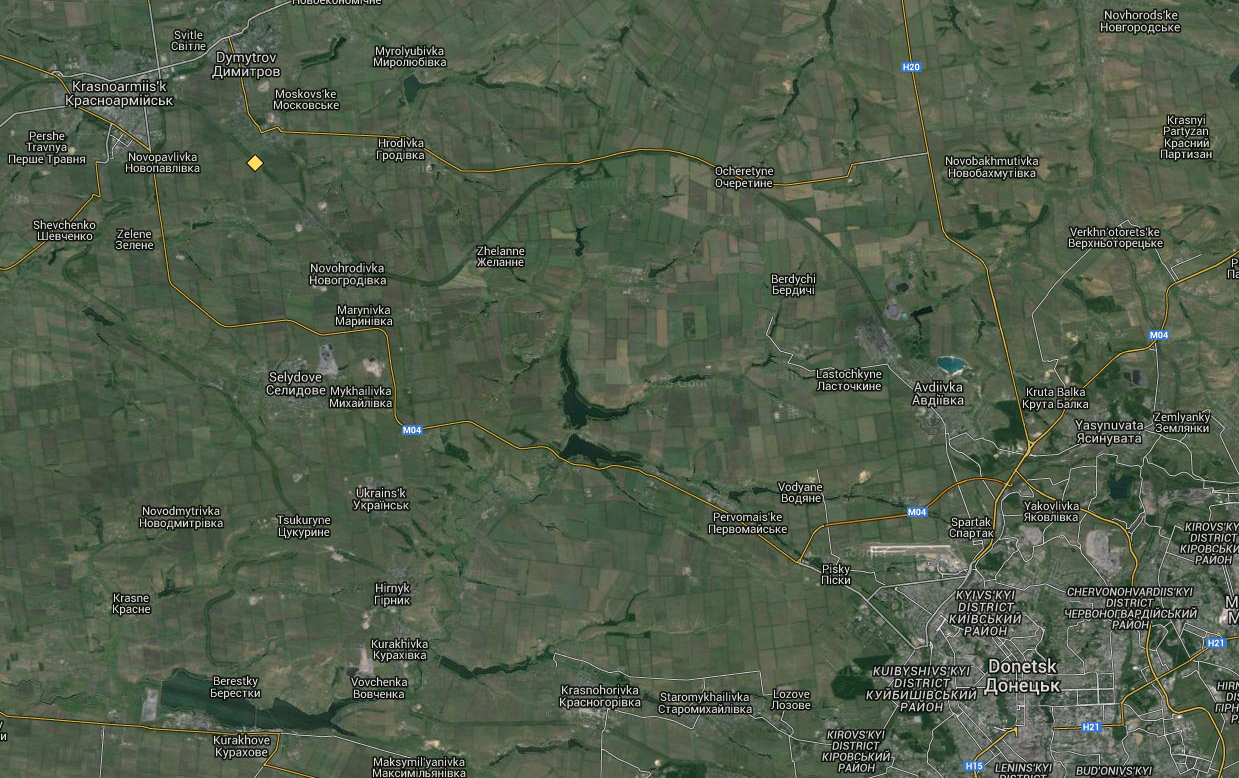
According to the report the bridge has been dismantled and replaced with a temporary structure, allowing trains to continue to pass.
Ukrainian Railways said that their initial estimate for the cost of fully repairing the bridge was 3 million hryvnia (US $191,000)
UNIAN notes that the state company estimates that the total cost for repairing damaged railway infrastructure in eastern Ukraine this year, after months of fighting, shelling and repeated acts of sabotage, is 754.3 million hryvnia (US $48 million).
Ukrainian Railways predict that, in the event of “further destabilisation” of the situation, their total losses for 2014 (taking into account drops in both passenger and freight traffic) may be up to 3 billion hryvnia (US $191 million).
— Pierre Vaux
As we reported yesterday, December 9, on December 8, the day before Ukrainian forces suspended combat in a day of “silence,” 50 Russian army trucks were spotted in Makeyevka.
They have been geolocated to the Makeyevka highway moving toward Donetsk.
Translation: 08.12.2014 #Makeyevka 9:00 Convoy of occupiers’ armor, about 50 units, with the Russian flag.
As a Twitter user pointed out, the trucks could be seen near the Praktiker store in Makeyevka.
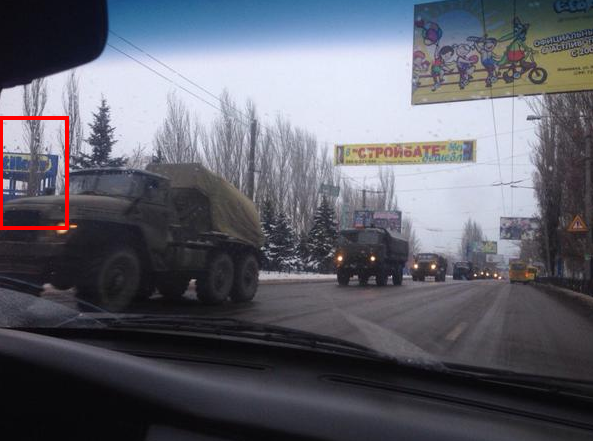
This matches a picture chosen for Google Street View by Alik Novik of this store:
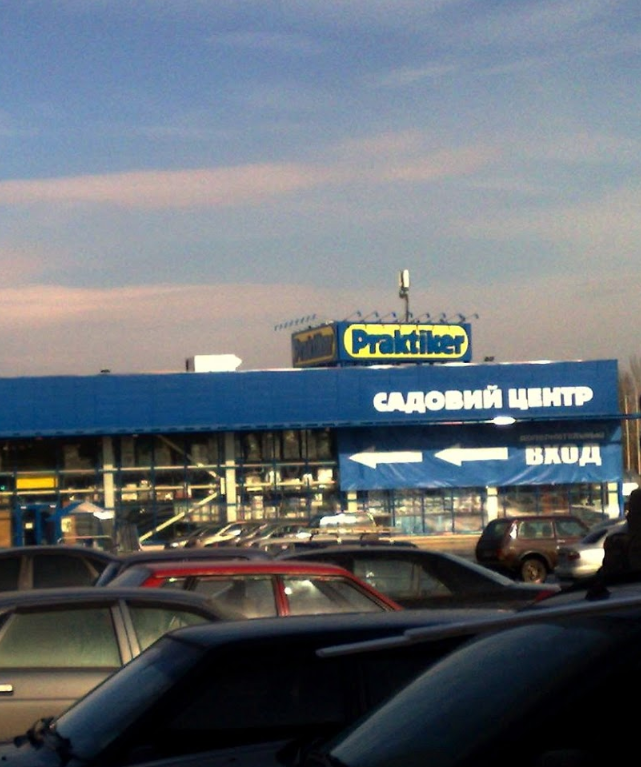
The store is visible on the map here, on the Makeyevka Highway which leads into Donetsk:
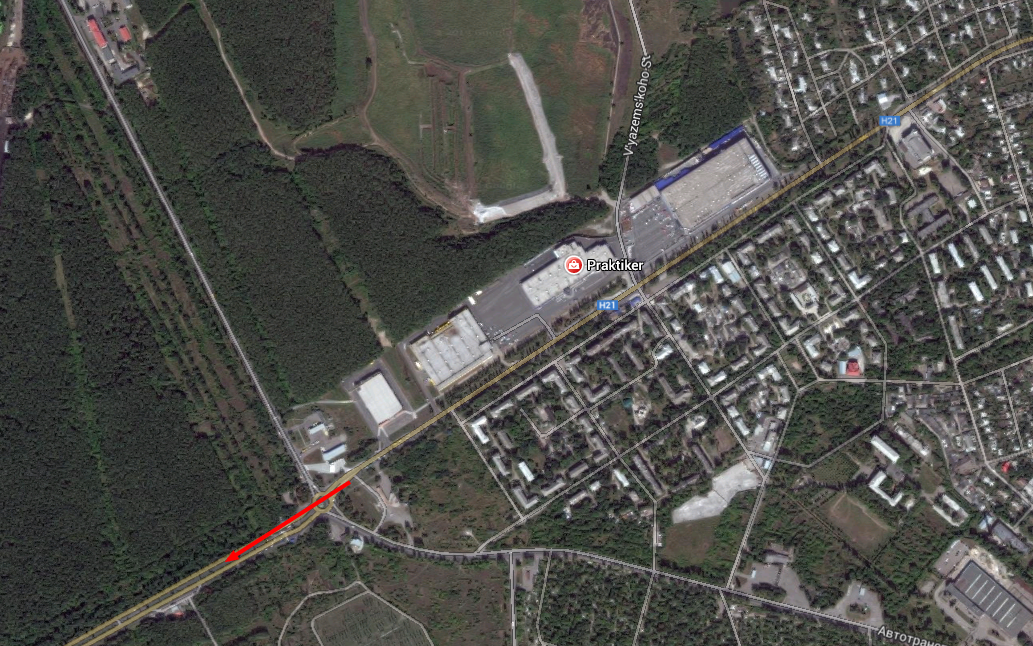
The lead truck in the convoy had a Russian flag:
Translation: Makeyevka at 9:00. Convoy of armor, about 50 vehicles with the Russian flag. 08.12.2014.
— Catherine A. Fitzpatrick
As we reported last weekend, on December 6, hundreds of people stormed the Regional State Administration building in Vinnytsia (Russian spelling Vinnitsa), a town about 250 kilometers southwest of Kiev. Eight policemen and one demonstrator were injured.
What were the issues that drove people to the streets again?
For some reason, an article that appeared on Liga.net titled “Why Did Unrest Break Out in the President’s Homeland?” is not accessible on this or other sites which reprinted it.
The text is still available in Google cache. Vinnytsia is President Petro Poroshenko’s home town. Among the people who stormed the administrative building on December 6 were people with flags from the party Svoboda, the UPA (named after the historic Ukrainian Insurgent Army) and other nationalist groups, says Liga.net. The article described them as creating “a little Maidan” by burning tires, blocking traffic and throwing eggs and smoke bombs at police.
The formal reason for such decisive actions, says Liga.net was the disagreement of the “public” with the intention of the deputies to remove Sergei Svitko, chairman of the regional council. As a result of the clashes 8 policemen were injured and a dozen demonstrators. The crowd also demanded the resignation of Governor Anatoly Oliynyk, and the heads of the regional police and prosecutor’s office. They elected an alternative “people’s governor,” Aleksey Furman, who is the head of the Vinnytsia cell of of the Svoboda party.
The demonstrations lasted for three days.
Anton Gerashchenko, advisor to the Ukrainian Foreign Ministry, tells the story differently in an op-ed published in Forbes Ukraine dated December 8, titled “Riots in Vinnitsa Are the Petty Intrigues of Local Bureaucrats.”
Towns often described as “unstable” are Kharkov and Odessa — but never Vinnytsia. This all changed in the last week. Yet Gerashchenko believes that the clash was really about a local conflict between Sergei Svitko and his enemies (translation by The Interpreter):
If the majority of deputies of a regional council have well-argued issues or claims against the head of the regional council, they have the complete right to raise the question of lack of faith in him. In a normal civilized country, people talk to each other and come to an agreement and do not bring in crowds of their supporters and even sic them on police.
Svitko should have held meetings with the discontented deputies and not organized a disruption of the session, said Gerashchenko. He discounted the story that Igor Morenets, chief of police didn’t allow peaceful demonstrators into the session, and that supposedly only 20 of the protesters wanted to enter. Under Ukrainian law, any citizen can observe a session of a local council. The meeting room can only hold so many people, which is why it was proposed to invite in just 20.
Gerashchenko inquired of a local Vinnytsia activist Tatyana Kayda why she didn’t call the regional council head to ask him why more people weren’t being allowed in the building, since she was in contact with him. She said the police simply wouldn’t let them in. Meanwhile, the police said the crowd was rowdy which is why they didn’t let them in.
Gerashchenko dismissed the dark claims of some local activists that “the hand of Moscow” was behind the unrest.
Recently Gazeta.ru exposed how the Kremlin department responsible for relations with Ukraine organized and supported pro-Russian demonstrations in Ukrainian cities. They failed at getting enough pro-Russian activists organized, and some violent separatists were arrested. Could the Kremlin be turning now to discontented Ukrainian nationalists? That question always remains open, but Gerashchenko said he had no such information. He thought it was a simple matter of a local official clinging to his post.
On December 8, other groups in Vinnytsia then held a procession despite rainy weather to protest against separatism in the city, to demand an investigation into the riot December 6, and disband the regional council. About 4-5,000 people took part, myvin.ua and Depo.ua reported.
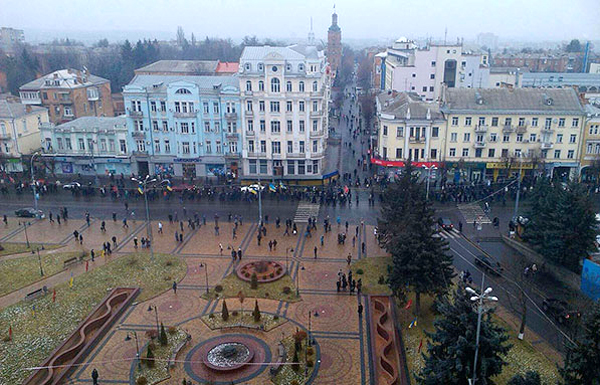
Photo by myvin.com.ua
Oliynyk said at a press conference that he was prepared to step down, but said he wanted an orderly transfer of power under the law,” the local news site 20 minutes reported.
DePo called the riot December 6 “a provocation,” and said it had been timed before the resumption of the Minsk peace talks to try to pressure President Poroshenko. Svitko had been elected in the spring, but opposition to him was growing and it was believed he was turning out “the masses” to try to hold his position. Anton Gerashchenko was cited regarding a break-down in relations between Oliynik and Svitko after the recent elections to the parliament. Out of 101 deputies present at the Vinnytsia session on December 6, 64 votes to dismiss him, although 67 were required for the motion to succeed. That’s when the fighting broke out.
Oliynyk said he suspected the hand of Russian intelligence in inciting unrest. There was speculation on social media that Sergei Tatusyak, a Party of Regions leader in Vinnytsia, had organized 12 buses with people to stoke the unrest. There was no confirmation of this information, although after the storming of the administrative building, unknown persons attacked Tatusyak’s office and threw rocks and paint at the building. Depo.ua also noted the rumors of the plan to put Svoboda’s Furman in power (translation by The Interpreter):
Now the President must not only remove both scandal-mongers from
their posts, but conduct a serious audit in his homeland. Everything
points to other people, much more dangerous players, decided to exploit a
conflict between Oliynyk and Svitko. Besides Tatusyak, among the
Vinnitsa elite is a significant number of persons who to this day orient
toward the Kremlin. In particular, we are talking about the communist
“Regionaire” family, the Kaletnikovs, who, although they did not get
into parliament, have enormous resources in the region. It is a trivial
matter for them to rock the situation in Vinnytsia if necessary.
— Catherine A. Fitzpatrick
A bomb went off in the southern port city of Odessa this morning at 1:30, social media users report (translations by The Interpreter):
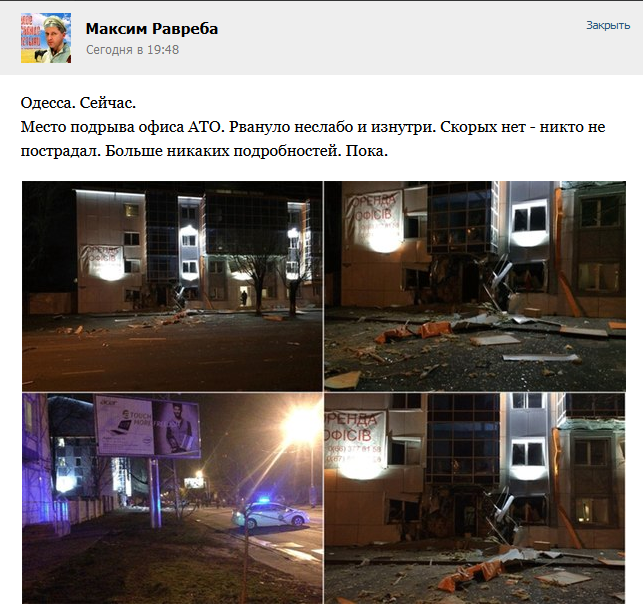
Translation: Odessa. Now. Place of explosion is ATO [Anti-Terrorist Operation office]. It burst out hard and from inside. There are no ambulances. No one was hurt. There is no more information – for now.
From a VKontakte post from a user clear opposed to the EuroMaidan movement:
10.12.2014. #Odessa. At about 01:30, many Odessians were awoken by the sound of a powerful explosion. The volunteer office of the Ukro-fascist army blew up!
The thunder was heard by the residents of Tairov, Cheryomushki, Tontan, and some districts of Moldavanka, Slobodka and the center of town.
The explosion thundered in a new office center built on the place of an abandonded building on the corner of Admiralsky Avenue and Krasnova Street.
Judging from the photo, the epicenter of the explosion was one of the offices on the first floor of the building. According to information disseminated by gay activists of Euromaidan in social media, one of the volunteer organizations was here.
The location is here on Google Street View, where an abandoned building can be seen at this corner, which was there at the time Google filmed the area, before the new construction this year.
Translation: Odessa Night 10.12.14 Explosion of the Volunteer Center. Admiraly Avenue/Krasnova Street. Photo by Maksim Voytenko.
Translation: 10.12.2014 #Odessa: About 01:30 many Odessians were awoken by the sound of a powerful explosion. A volunteer office has blown up in Odessa.
Translation: #Kharkov now #Odessa. The explosions don’t quiet down. I wonder how long we will go on tolerating this? #SBU #Ukraine Answer the people!
— Catherine A. Fitzpatrick